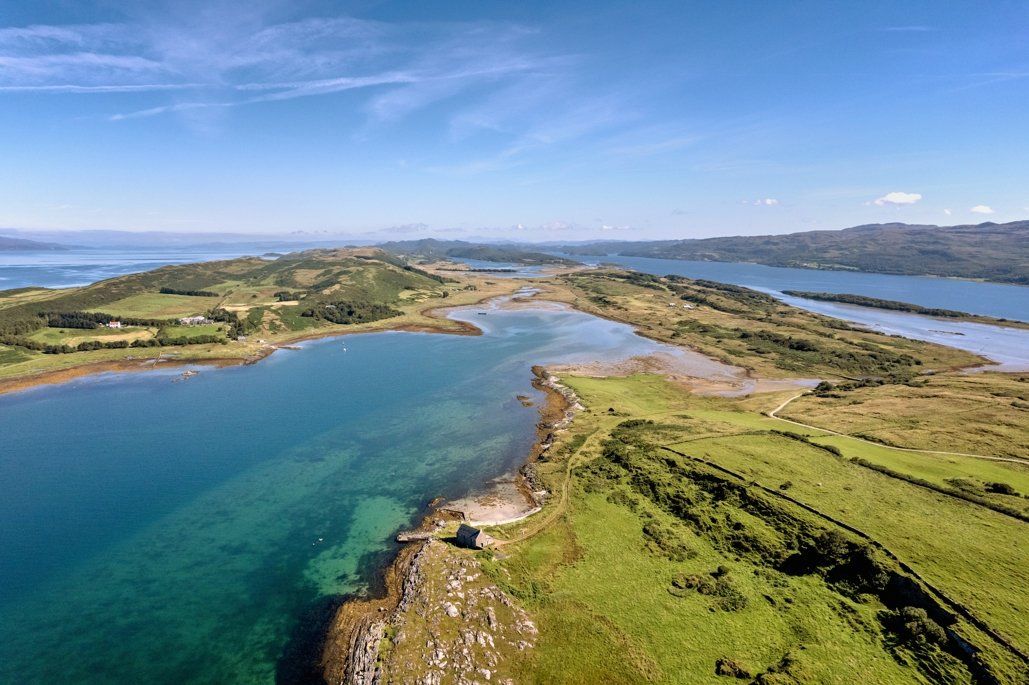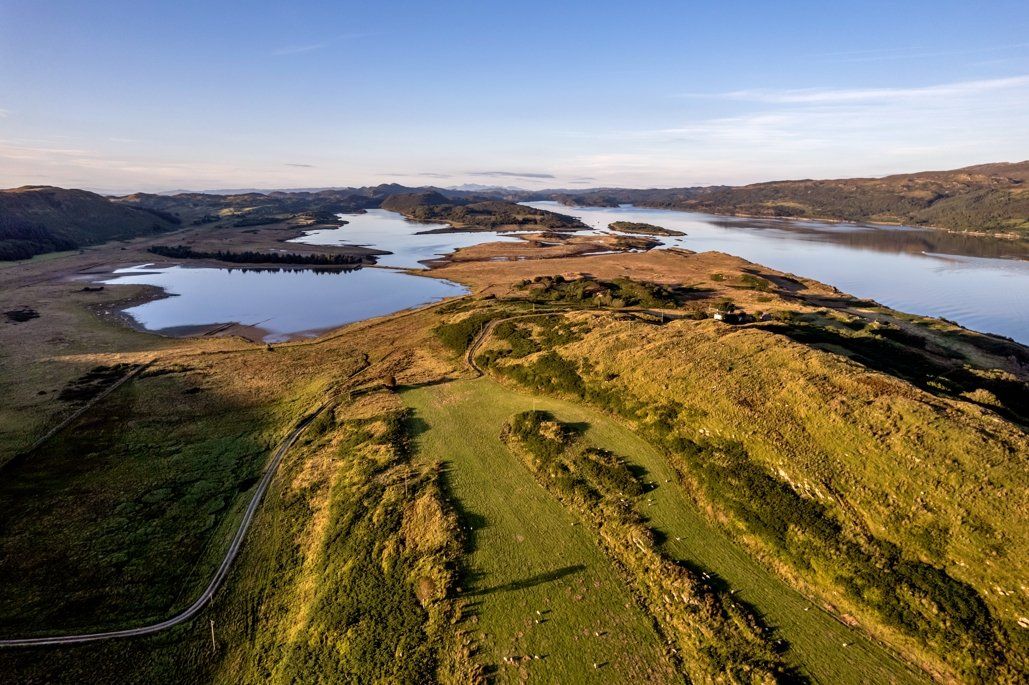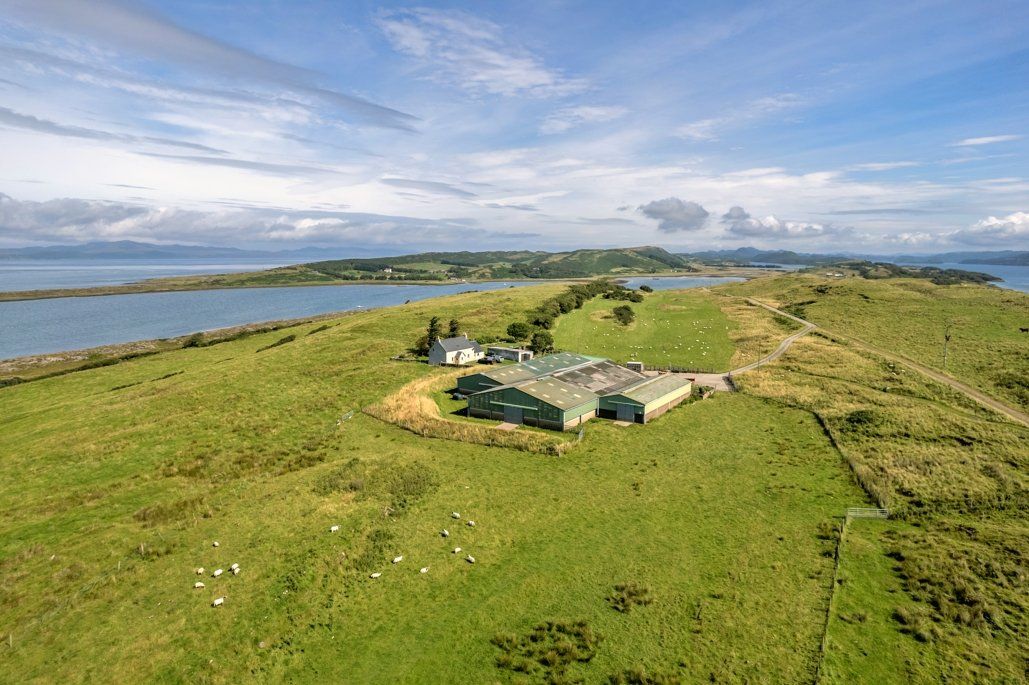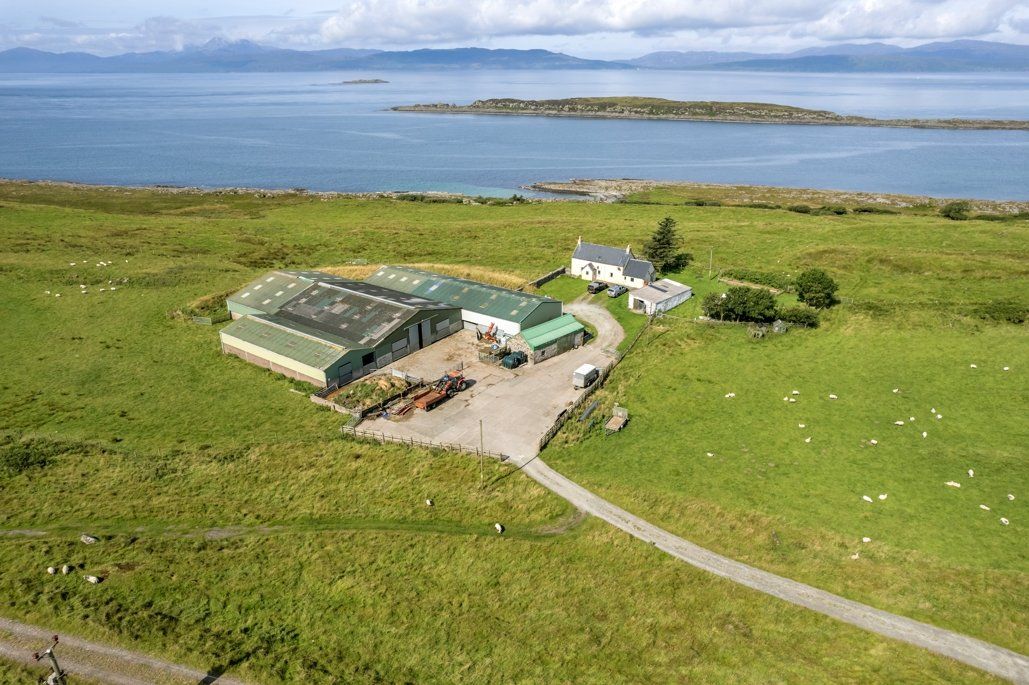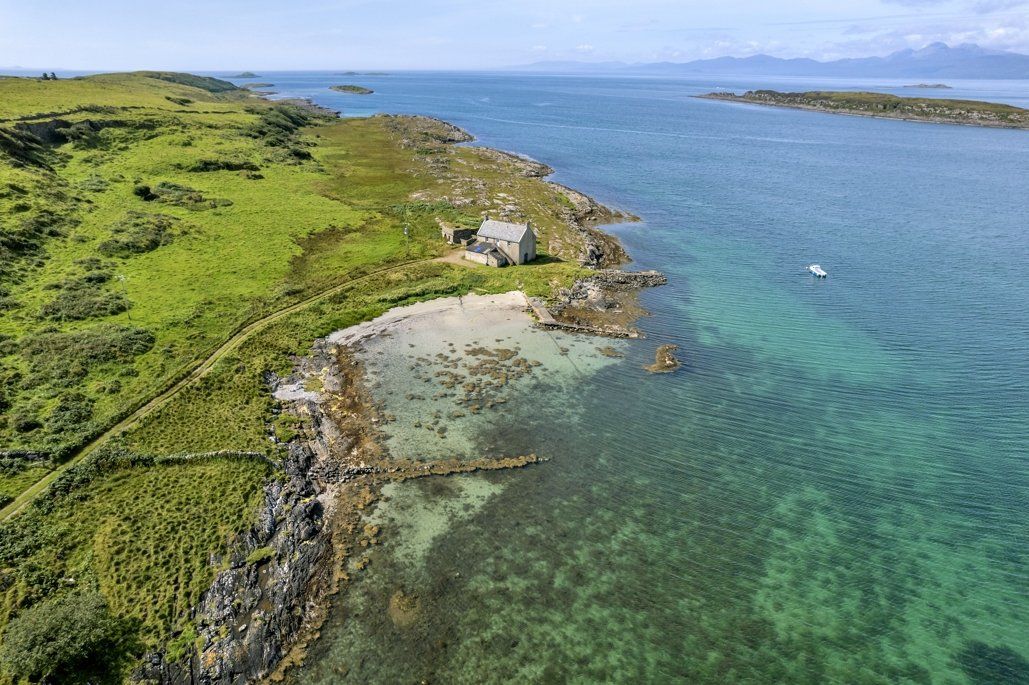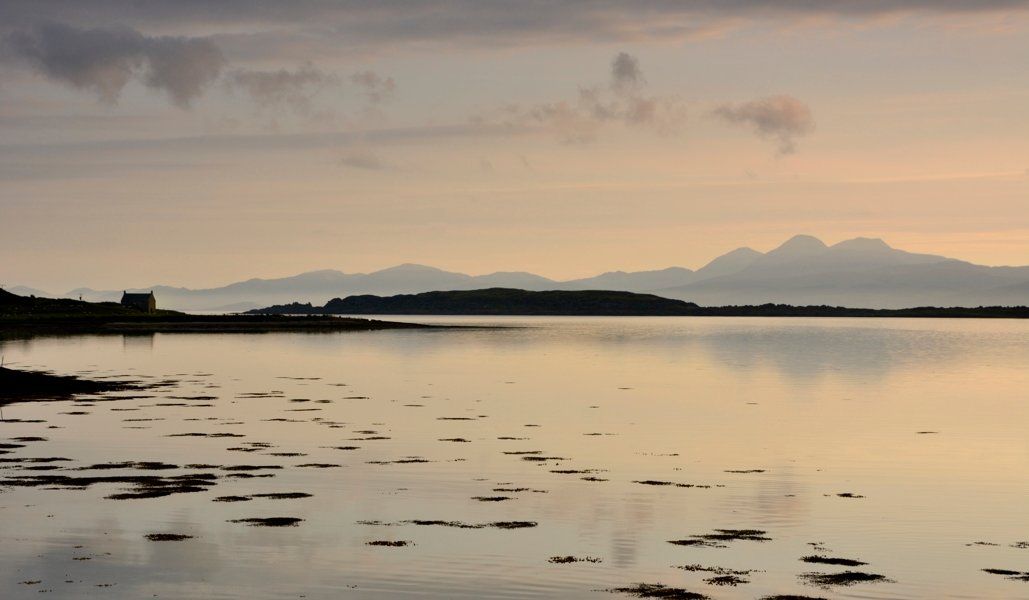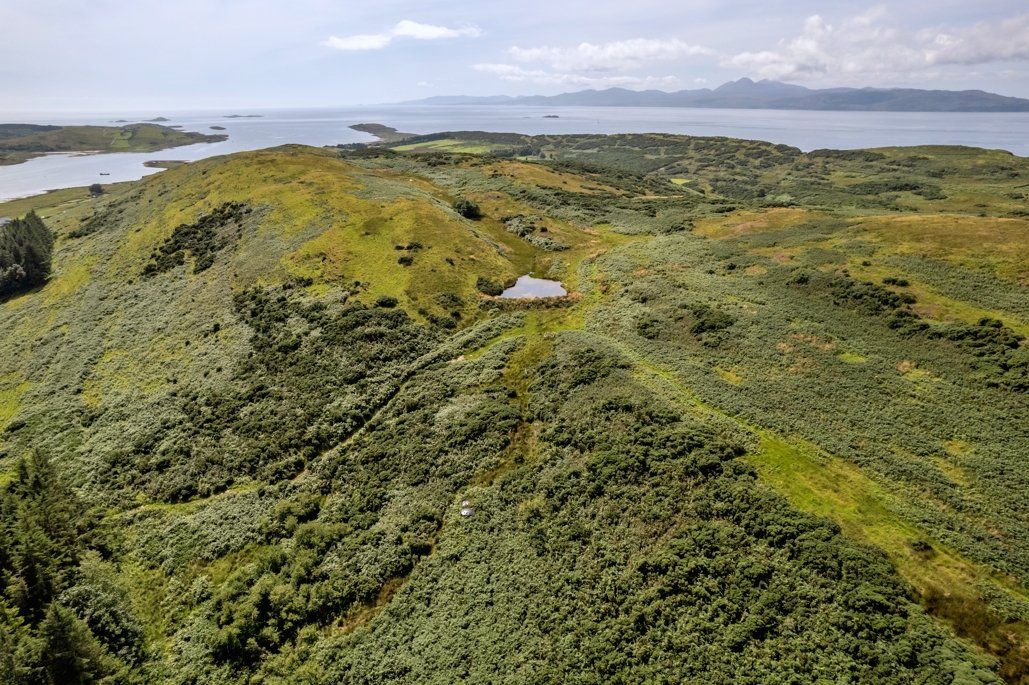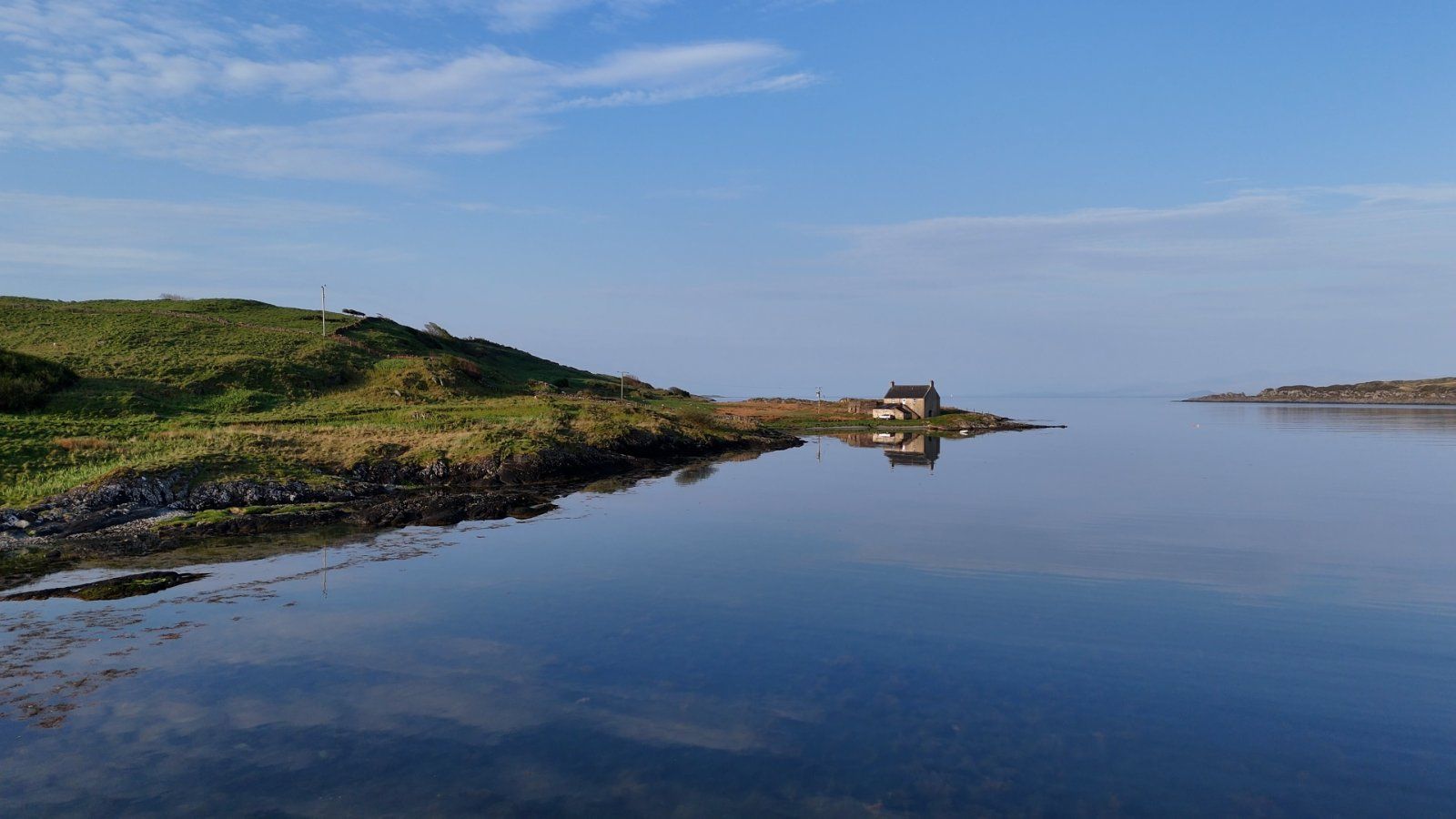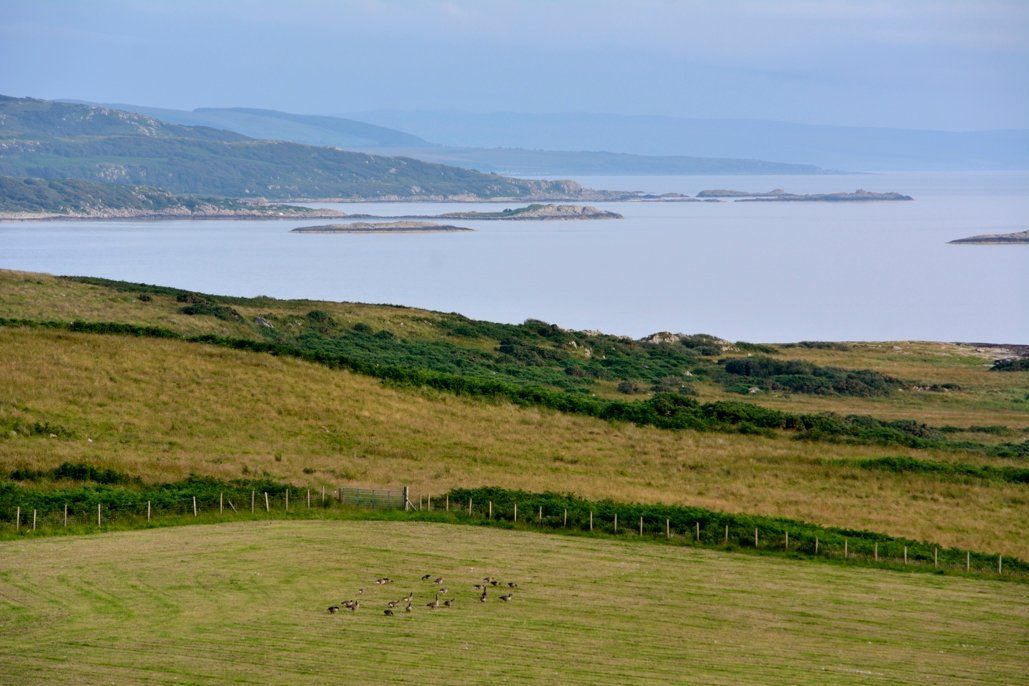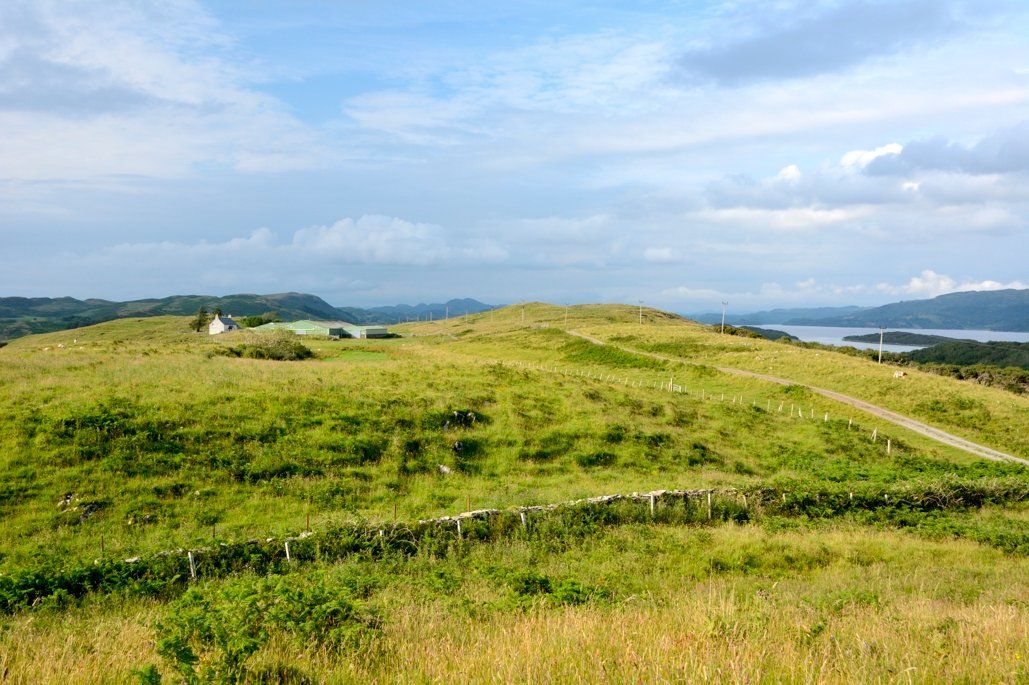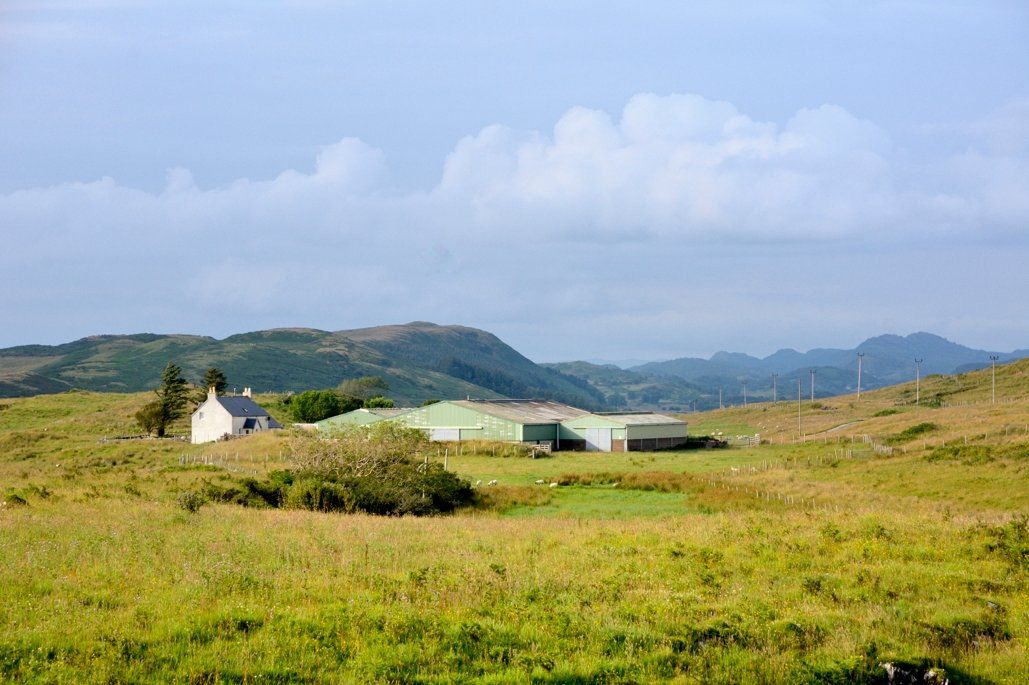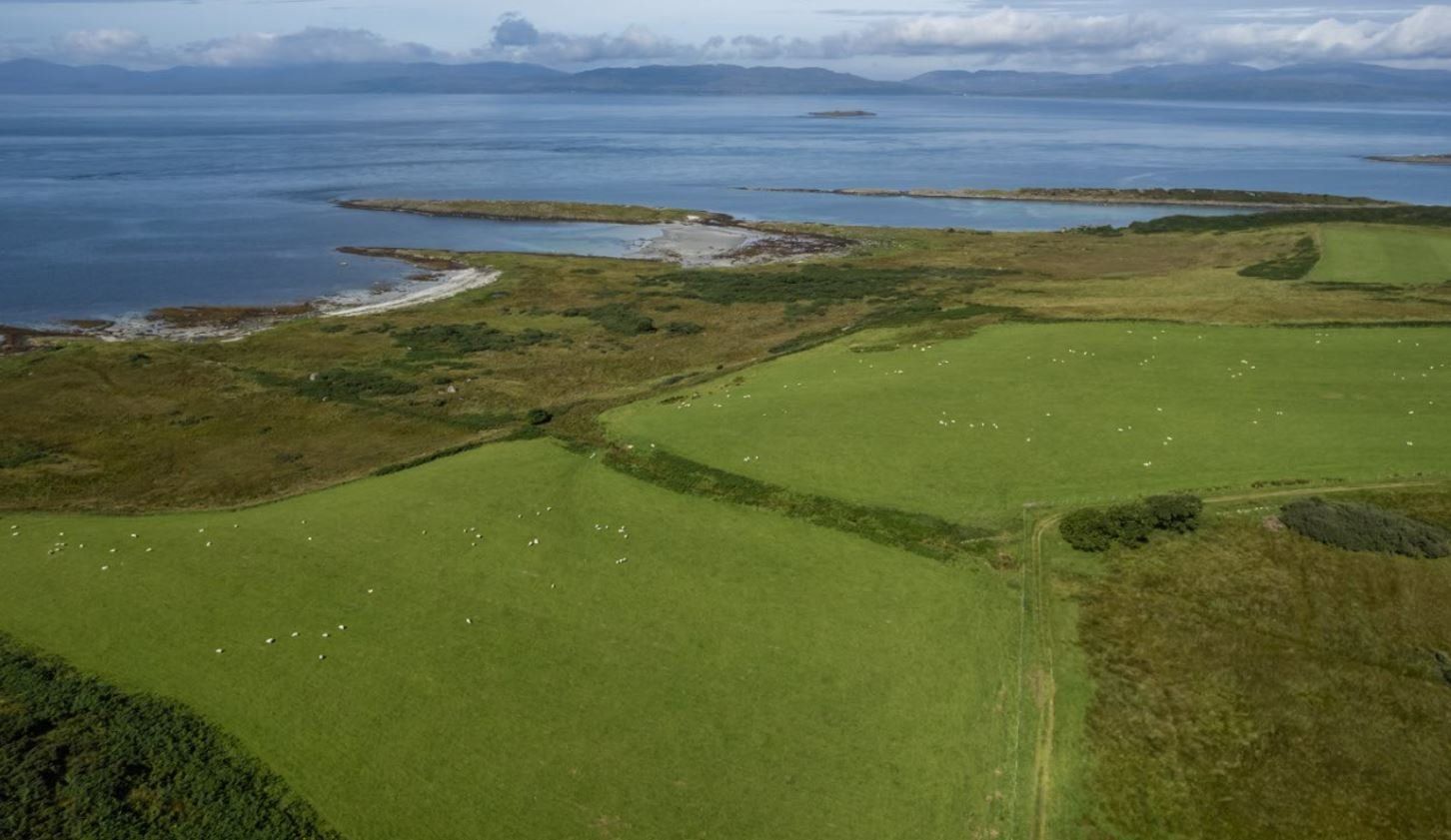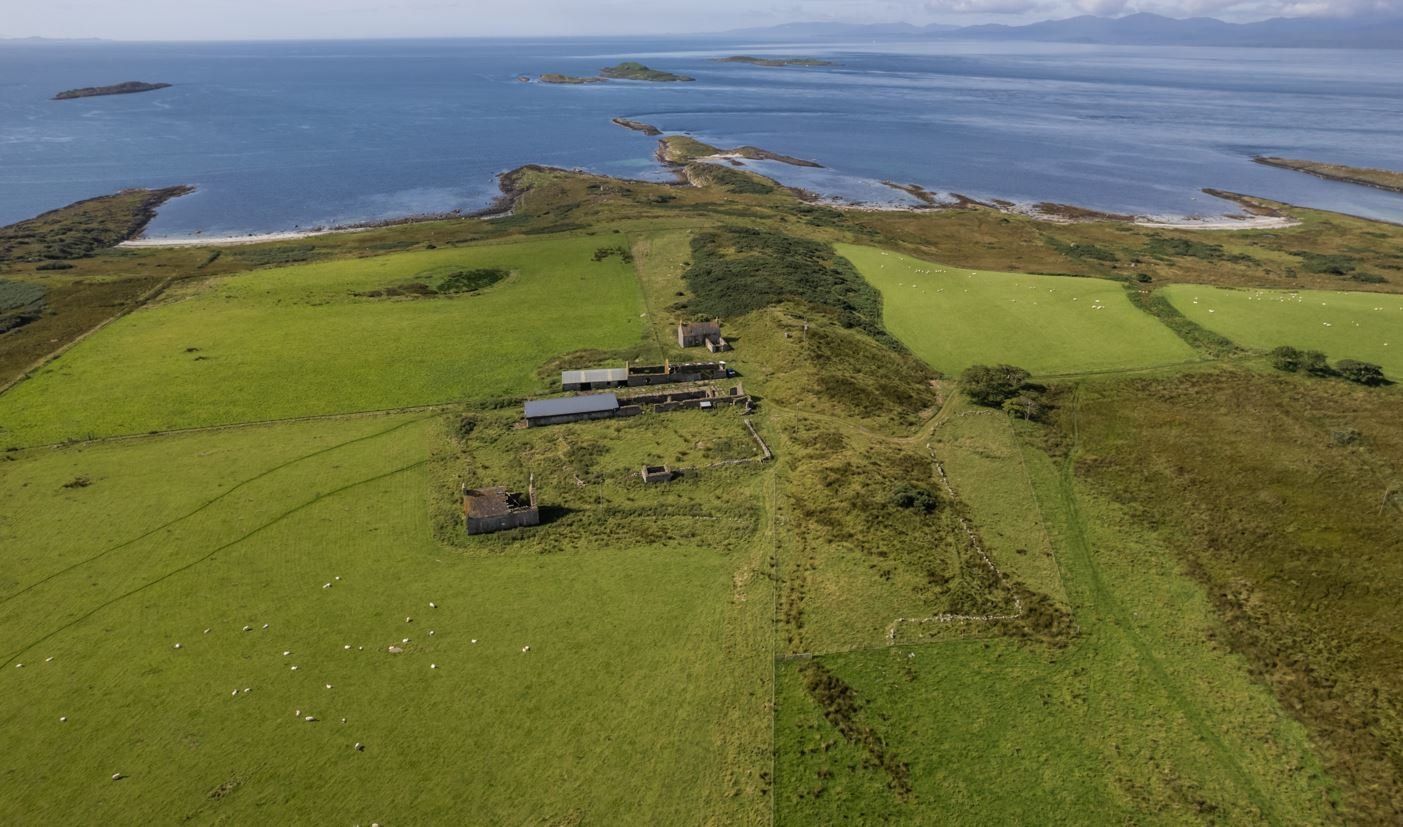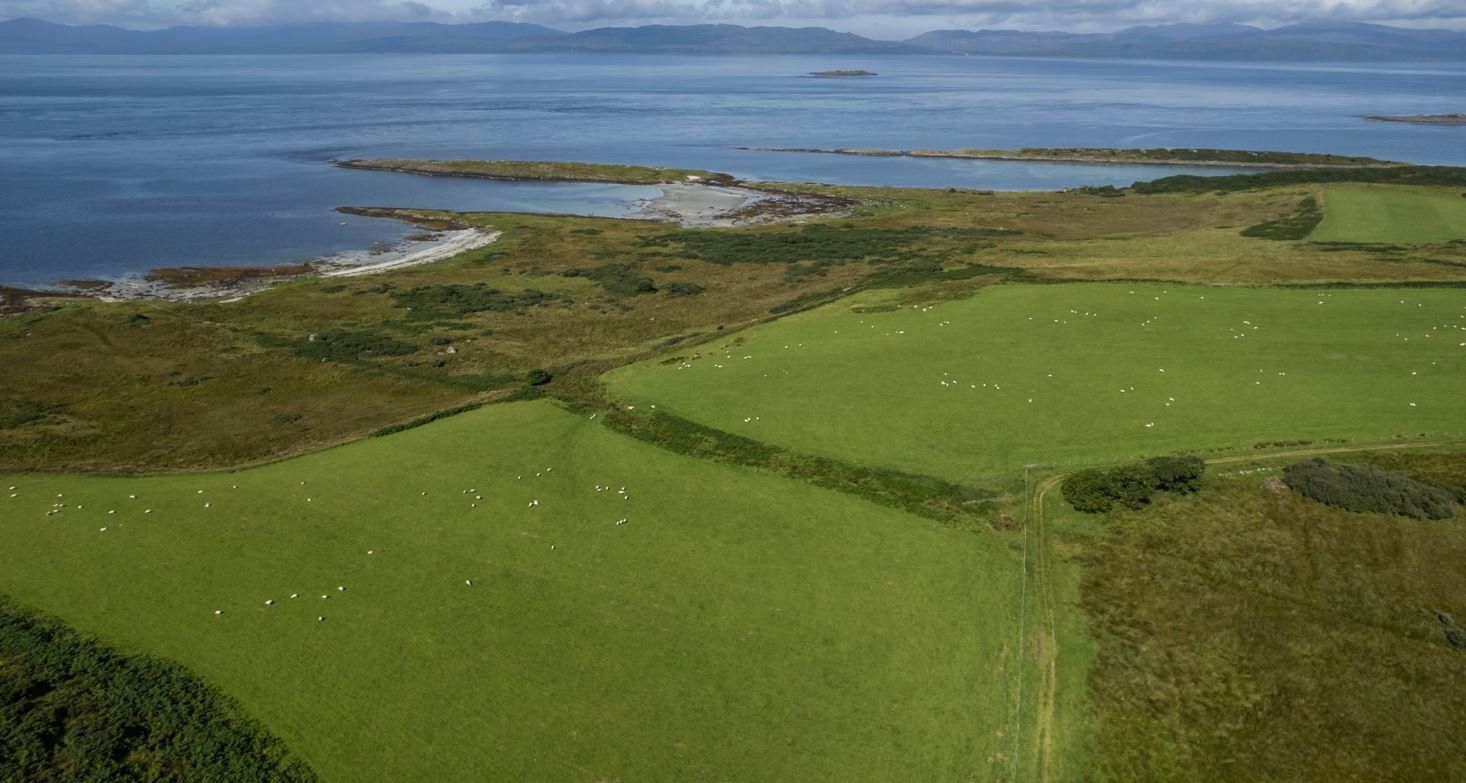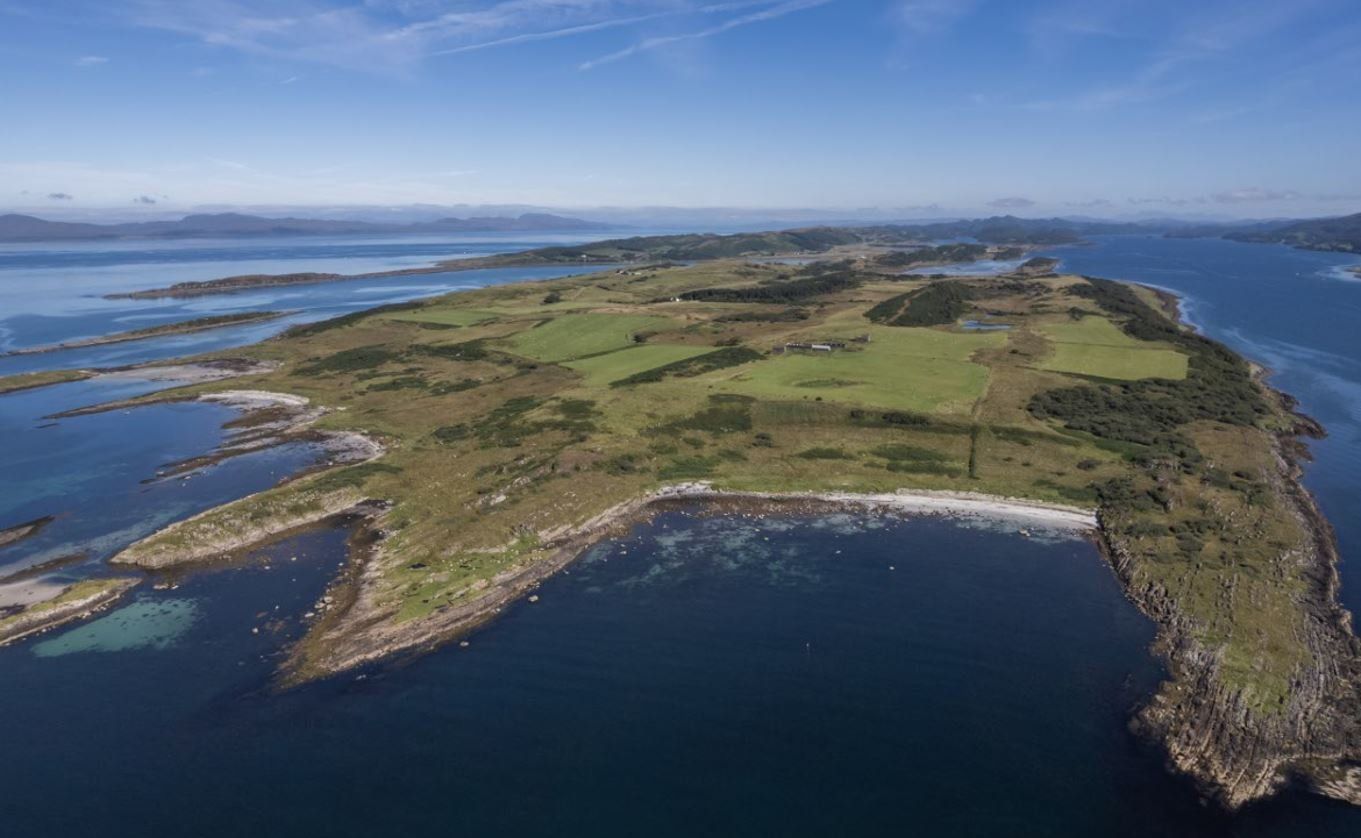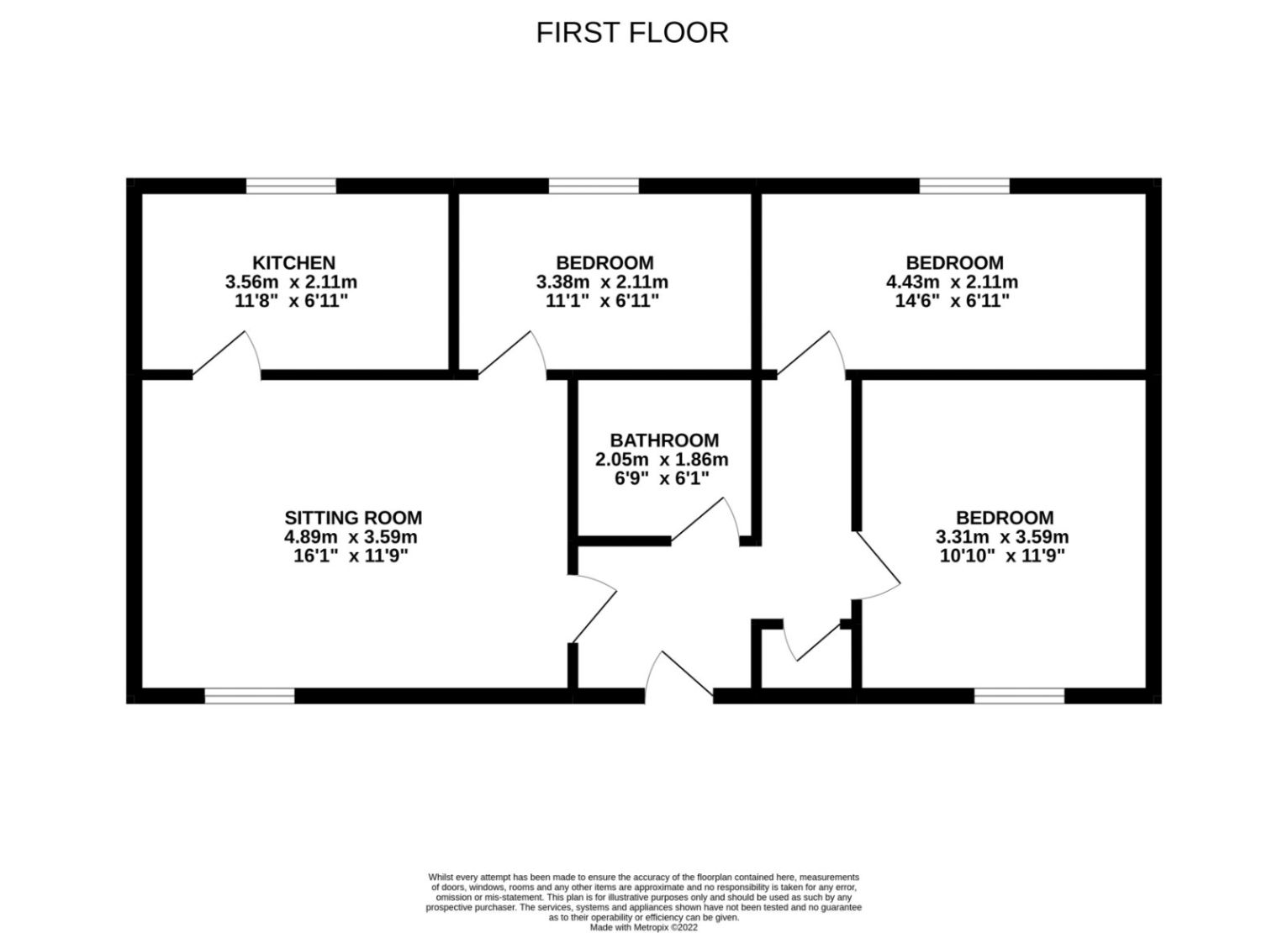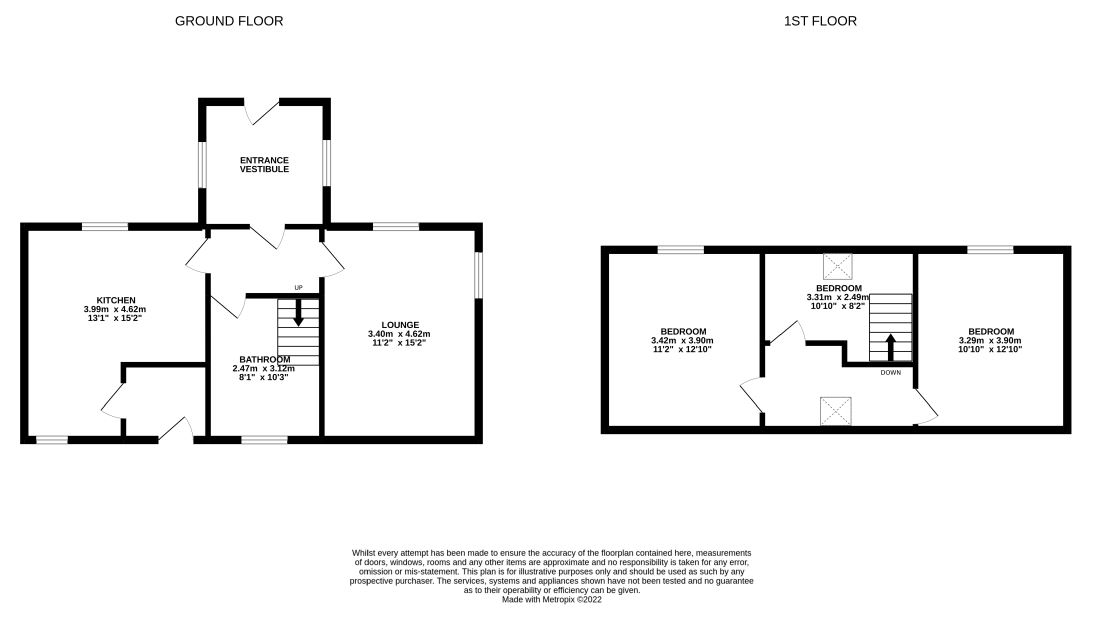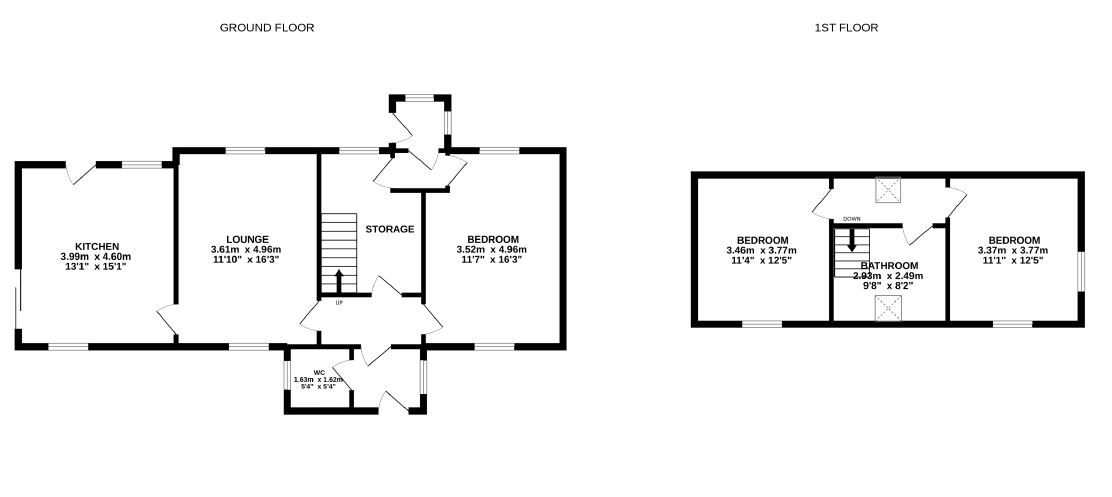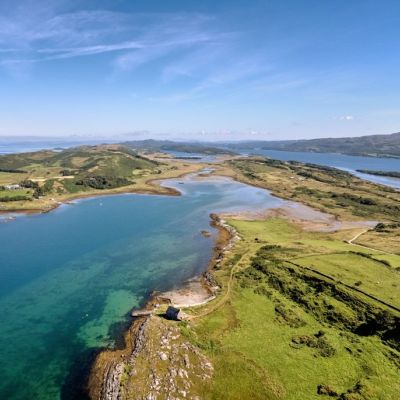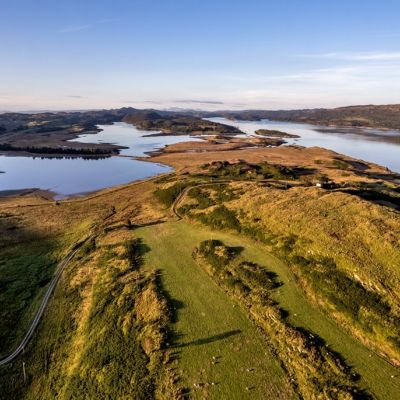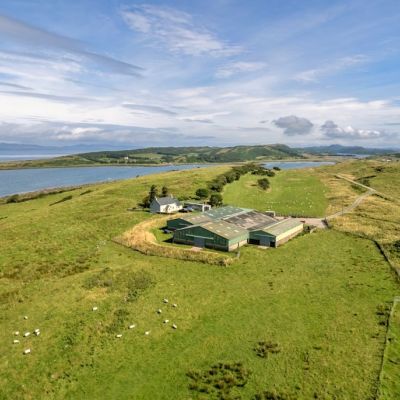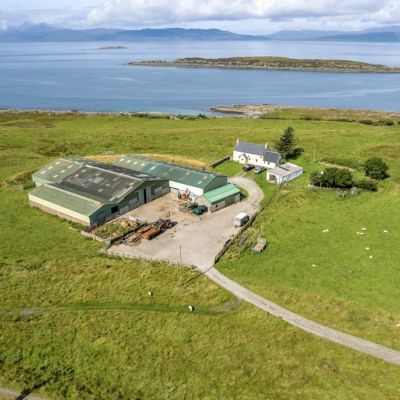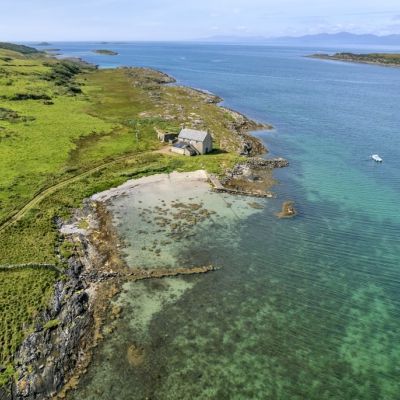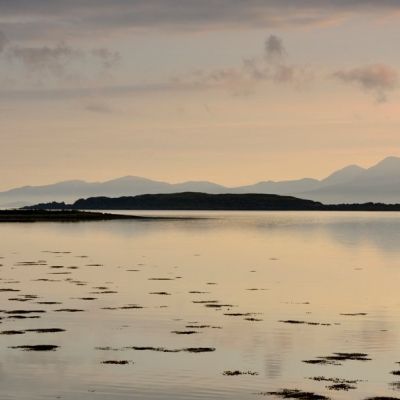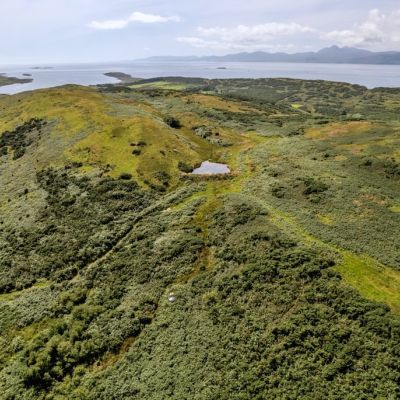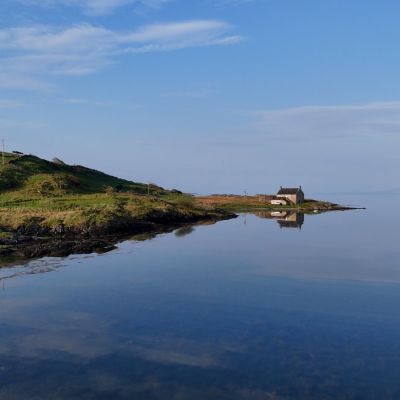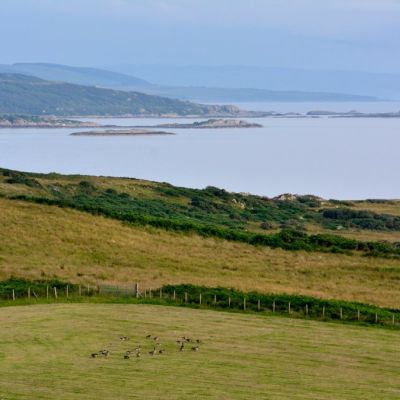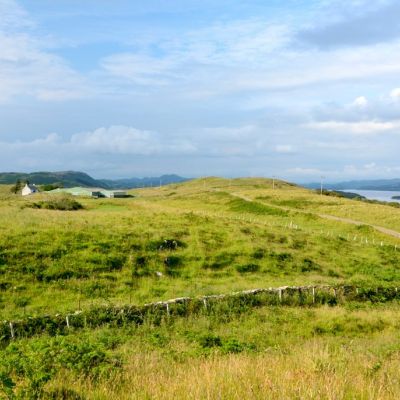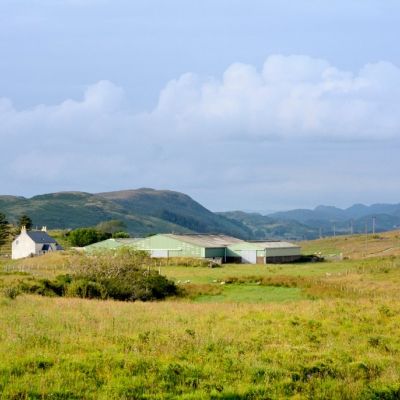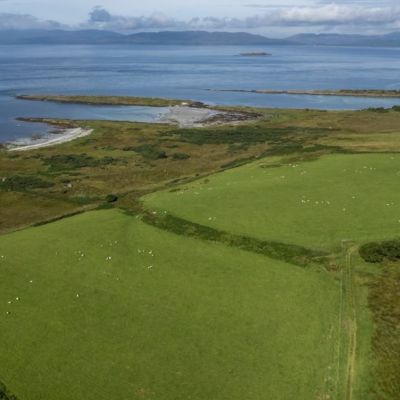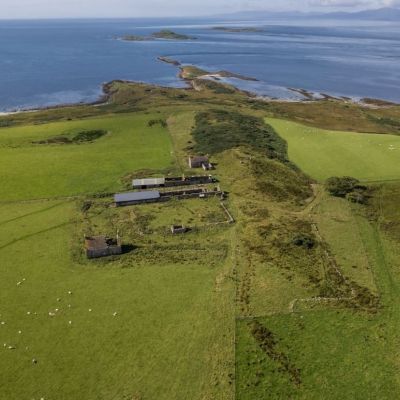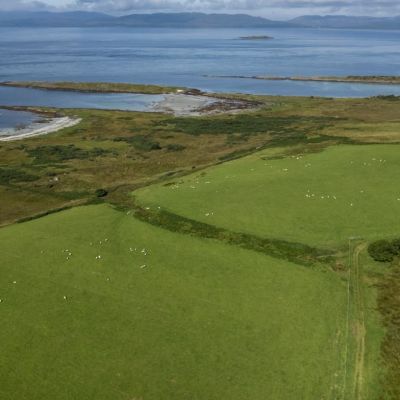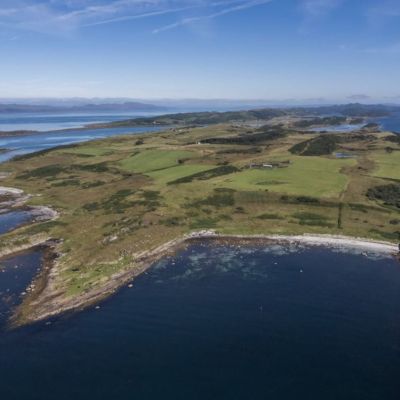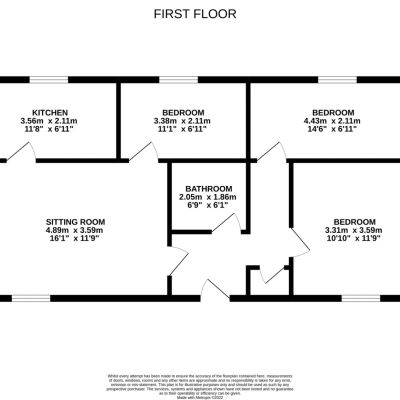Lochgilphead Argyll PA31 Tayvallich
- Offers Over
- £3,350,000
- C Council Band
A spectacular estate featuring the tip of a majestic peninsula and adjoining island which incorporates a variety of nationally important terrestrial and marine ecosystems.
INTRODUCTION The Ulva peninsula and the Isle of Danna are situated at the southern tip of the outstandingly picturesque and ecologically important Tayvallich peninsula lying between the Sound of Jura and Knapdale on Scotland’s west coast. With the wider area being recognised for its biodiversity and species of importance, Ulva and Danna are largely covered by the Ulva, Danna and McCormaig Isles Site of Special Scientific Interest (SSSI) and the Tayvallich Juniper and Coast Special Area of Conservation (SAC). Both areas are also surrounded by the Loch Sween Marine Protection Area (MPA).
With a predominance of grassland habitats, the Ulva peninsula and the Isle of Danna also contain many fragments of temperate Atlantic rainforest; an increasingly rare habitat in Scotland, and one of national and international importance. These can be highly biodiverse carbon sinks when in good condition. Restoring, connecting and monitoring these habitats is one of the current owner - Highlands Rewilding Limited’s – main priorities, particularly through reducing browsing and grazing pressure to encourage natural regeneration. The coastal and marine areas are also extremely biodiverse and include nationally important marine priority areas including saltmarsh, mixed intertidal sediments and native oysters. They too have considerable worth as potential future natural capital generators of biodiversity and carbon credits.
BACKGROUND The entirety of the Tayvallich Estate – extending to nearly 3,400 acres (1,400 hectares) was purchased by Highlands Rewilding Ltd (www. highlandsrewilding.co.uk) in May 2023 following an open market sales process through which the estate was offered for sale in 13 lots. Attracted by its unique combination of landscape, setting, widely varying terrestrial and marine ecosystems and the vibrant local community on the peninsula, Highlands Rewilding raised sufficient debt finance to secure a purchase of the entire estate to add to its portfolio of Scottish estates (Bunloit in Inverness-shire and Beldorney in Aberdeenshire). The purpose of their ownership of these estates was to enable and empower enlightened land managers and scientists to collaborate to demonstrate in practical terms how nature and community in synergy with one another can restore to health the beautiful but denuded landscapes and the fragile but resilient communities that exist on and in the vicinity of each of their estates.
The company’s land management actions and objectives are science-led, aiming to accelerate nature-based solutions that can help fight the existential and related crises of climate meltdown, biodiversity collapse, and social inequality, whilst helping to rebuild local economies. Until recently, the whole of Tayvallich Estate was one of three current sites being managed as a multi-habitat open air natural capital laboratory, generating data that can reliably underpin credits in natural capital, so making the nature-recovery industry confidently investable.
The work at Tayvallich is rooted in the community, as the company aims to break new ground in consultation, partnership and involvement with the communities of which it is a part. Highlands Rewilding engages in a combination of land management activities: ecological restoration, regenerative agriculture, forestry management and regeneration, community engagement and recreational management, and carefully monitors outcomes including through experimental research.
In pursuing its purpose of nature recovery and community prosperity through rewilding taken to scale, the company is in the process of evolving from being a land owner to a data-led land-management services company. This process has already been successful in enabling Highlands Rewilding to sell c.1,700 acres at the northern part of Tayvallich Estate to the Barrahormid Trust with whom they have agreed a long term management contract in the form of an OSPREY Agreement (‘Operating System Partnership for Rewilding’) which enables the land management work and data compilation undertaken over the last two years to be continued for the benefit of the owner, the landscape itself and the local community.
In light of the commercial realities of loan finance repayment, achieving a sale of the Ulva peninsula and the Isle of Danna is of highest priority for the vendors but it remains their firm preference that the purchaser is an individual or organisation that recognises this magnificent landscape for the collection of precious gems that it is and is keen to work in tandem with Highlands Rewilding Ltd in future to ensure continued management in accordance with the best principles and practices of nature recovery and community prosperity.
Lot 1 – THE ULVA PENINSULA (about 445 acres/180 hectares)
Extending to almost 450 acres and including an existing dwelling plus outbuildings/further development potential, mixed grade land including livestock grazing and saltmarsh together with over 5km of coastal frontage to Loch Sween, An Grianan and Linne Mhuirich together with two small islands and a stunning beach, this is a quite exceptional residential and amenity offering featuring substantial natural capital.
NEW ULVA HOUSE A traditional 1½-storey traditional stone dwelling with a southerly outlook, Mhor Ulva has a secluded and elevated setting with access via a track which leads from the minor public road. The accommodation (as shown on the floor plans) includes 2 reception rooms and 3 bedrooms and is reasonably modernised and well-appointed. The house sits amid an enclosed garden and is situated close to a range of outbuildings. The house is occupied by the estate manager under a Service Occupancy.
BUILDINGS There are three buildings at New Ulva comprising a general purpose store (5m x 11m), former barn (6m x 15m), and a livestock shed (10m x 18m).
LAND/WOODLAND/COASTLINE AND ISLANDS Forming part of the in-hand farm currently operated by Highlands Rewilding Ltd across the whole of the original Tayvallich Estate, the land comprises rough grazing and salt marsh which is grazed on a sensitive and seasonal basis.
With around 2km of coastal frontage to three different bodies of water (An Grianan, Linne Mhuirich and Loch Sween), access to the sea is a particular feature of this lot. This includes Port Michael – a small bay lying on the shore of Loch Sween. This includes the remnants of a former stone jetty and a boat mooring.
At high tide, Ulva provides access to Ceann an t-Sailein – a shallow tidal estuary which leads to Loch Sween (on the east side), and Loch Na Cille (on the west side) which feeds into the Sound of Jura making this lot particularly attractive to those with maritime interests.
Lot 2 – THE ISLE OF DANNA (About 811 acres/328 hectares)
Sometimes described as the ‘jewel in the crown of Tayvallich peninsula’, Danna is an island of more than 800 acres in extent which includes two existing residential properties; a functional range of farm buildings and a boathouse; the remains of an extensive farmstead with development potential on an exceptional site; mixed grade land including good quality pasture, rough grazing, enclosed stands of woodland/forestry, open native woodland and over 6km of coastal frontage including two jetties, several small islands and some stunning beaches.
EXISTING HOUSES/COTTAGES
New Danna Farmhouse A traditional 2-storey stone and slate farmhouse with superb position overlooking the Sound of Jura. Lying beside the principal range of farm buildings, the house provides comfortable accommodation over two floors. The property is currently occupied under a Service Occupancy by the farm stockman.
Port-nan-Gallan A 2-storey traditional house with spectacular position looking across Loch na Cille towards the island of Jura. The living accommodation is on the first floor and is accessible via an external stone staircase. As shown on the floor plans, the accommodation includes 2 bedrooms and the house has been recently vacated following a long term tenancy. It is habitable but in need of some renovation/ modernisation. The ground floor of the building includes a spacious boathouse – accessible via the gable end which opens onto the jetty and slipway. A particular feature of the estate overall and this lot in particular, this is a spacious building with gravel floor featuring an unusual barrel-vaulted ceiling. Adjoining the exterior of the main building is a further lean-to store. The boathouse is occupied by the vendors and therefore available to purchasers with vacant possession.
FARM AND ESTATE BUILDINGS A range of traditional and modern buildings situated beside New Danna Farmhouse includes three steel portal-framed livestock sheds comprising a general purpose/ sheep shed (13m x 36m), a cattle court (20m x 37m), and a cubicle shed (9m x 25m). In addition, there is a traditional stone steading building (6m x 11m). This is the principal set of agricultural buildings used by the in-hand farming business and they are all available with vacant possession to a purchaser.
REDUNDANT HOUSES/COTTAGES Danna na Cloiche Situated 500m to the south of New Danna with access via a track accessible by 4WD vehicle only, this is the extensive remnants of a former farmstead featuring two dwellings and two ranges of farm buildings partially enclosing a courtyard. Having been uninhabited for many years, the two dwellings are substantially dilapidated but, in each case, their physical structure remains largely intact including the majority of roof timbers and slates. Lying at the northern and southern ends of the site, there are two ranges of former farm buildings which are also in advanced state of dilapidation with the exception of two sections which have been partially re-roofed to provide shelter for livestock.
With its isolated setting and outstanding panoramic views, this site is considered to be well suited to residential development – perhaps as a single principal dwelling serving Danna Island; as a number of dwellings (for permanent or temporary use) or for some other form of functional use.
The vendors have not engaged in discussions with Argyll & Bute Council over the potential development of the site but advice received from independent consultants suggests that, with the appropriate approach to the planning application, this site offers huge potential for a visionary development of some form.
LAND Danna includes some of the best and most productive agricultural land which is enclosed as livestock proof and includes provision of drinking water.
ISLANDS AND COASTLINE Lying off the coast of Danna are several small and uninhabited islands together with over 6km of coastline on Loch Sween, Loch na Cille and the Sound of Jura. There are two jetties at Port nan Gallan together with boathouse and mooring which enables boats of varying sizes to be kept on the island and used for recreation and exploration of the Argyll and inner Hebridean coastline – both far and near.
The southern shore of the island includes several very attractive sandy beaches and a further feature is Rubha Bhreatanich (‘British Point’ in Gaelic) – a small, semiwooded peninsula extending north from the main island and lying between the open sea of Loch Sween on the west side and the estuary of Ceann an t-Sailean (‘Head of Beams’) on the east side.
SPORT/AMENITY AND NATURAL CAPITAL Danna Island provides extensive potential for ecological enhancement/restoration including expansion of native woodland and restoration of wetlands.
For traditional field sports enthusiasts, there are red, sika and roe deer on the island offering stalking opportunities; there are two flight ponds close to Danna na Cloiche and potential for wild and reared game shooting.
The ability to access the sea and moor a boat enables almost endless sport, leisure or recreation on or in the sea.
RURAL HOUSING BURDEN A rural housing burden will be applied to the existing residential properties within the subjects of sale. This is a title condition which protects affordable housing stock for local communities in perpetuity, where the property owner has full legal title. Allocation policies prioritise people with a need to live or work in an area, so housing stock is protected for local communities forever. Further information about rural housing burdens is available at www.chtrust.co.uk/rural-housingburden1. html
This property has 1256 acres of land.
Outside
GRASSLANDS The underlying complex geology of the site and the unique influence of the oceanic climate combine to produce an exceptionally diverse mosaic of habitat types at Ulva and Danna, with a high species richness (more than 500 species of vascular plants have been recorded). This makes this one of the richest areas of conservation importance in the Argyll region which is recognized with the Ulva, Danna and the McCormaig Isles Site of Special Scientific Interest (SSSI) and the Tayvallich Juniper and Coast Special Area of Conservation (SAC).
Several areas of calcareous grassland occur within the mosaic of habitat types and reflect the distribution of underlying baserich limestone. In patches of more acidic rock types, heath communities have developed and there are also areas of species rich acid grassland, as well as more improved neutral grassland. The area also supports internationallyimportant wintering populations of barnacle geese and Greenland white-fronted geese. The barnacle geese use the improved pastures on the Isle of Danna as their core feeding zone, whilst the whitefronted geese range more widely, and use the saltmarsh communities to a greater extent. Very rare and internationally important Marsh Fritillary butterflies also thrive here in the damp acidic grasslands, wet and dry heaths, rush pastures and valley-bottom mires where there are plenty of their main foodplant, devil’s-bit scabious. Carefully managed grazing is currently and will, in future be an important part of the management of these open areas.
COASTAL AND MARINE HABITATS The coastal environments of Danna and Ulva are extremely diverse and include nationally significant priority marine features such as saltmarsh, mixed intertidal sediments and native oysters. They have considerable worth as potential future natural capital generators of biodiversity and carbon credits. Saltmarsh are highly biodiverse supporting migratory birds, specialist plants, indigenous insects, juvenile fish and crustaceans. They act as natural carbon sequestration sinks, storing carbon both in the plants and sediment. A hectare of salt marsh can capture two tonnes of carbon every year and store it for millennia if undisturbed. Mixed intertidal sediments act as nutrient sinks and biodiversity hotspots. The high nutrient levels and variety of grain sizes making-up the habitat accommodate a wide variety of species. The mud component within mixed sediments can contain substantial amounts of carbon. Native oyster are habitat forming ecosystem engineers with a set of extraordinary environmental services. A single oyster can filter over 200 litres of water a day removing excess nutrients and harmful particulate matter including microplastics. Oyster assemblages form biodiversity hotspots; a single oyster can have over 100 individual species attached to or living on its shell. The coastal habitats support an extensive list of species, including rich damsel and dragonfly communities, marsh fritillary butterflies, wintering Curlew, breeding Oystercatcher, Redshank, Common Snipe and 1% of the British winter population of Whooper swans to name just a few.
WOODLANDS Ancient temperate rainforest woodlands, dominated by mature oak trees, also host a variety of other native species like birch, hazel, rowan, and holly, is the predominant woodland type on Ulva and the Isle of Danna. Due to the proximity to the Atlantic Ocean, these woodlands provide ideal conditions for rare oceanic bryophytes, including species at the northern edge of their range. In addition to the native woodland, there is an area of productive woodland, which has been previously thinned. Plans to remove areas of non-native species have been drawn up so that these woodlands can be replaced with native species in line with those found in adjacent native woodlands.
FARMING AND AGRICULTURE The Tayvallich peninsula has a mild Gulf Stream climate with average annual rainfall of about 1,800mm (71 inches). Comprising brown soils and mineral podzols and with an agricultural capability classified under Scotland’s Soils national soil survey as comprising mostly grade 5.3 (land capable of use as improved grassland) and 6.1 (land capable of use as rough grazing with high proportion of palatable plants), the best of the land – which is grade 4.2 in classification (capable of producing a narrow range of crops, primarily on grassland with short arable breaks of forage crops and cereal) is at the south end of Danna Island.
The current farming system is based on the production of store lambs from a breeding flock of Scottish Blackface ewes together with the production of suckled calves from a herd of about 60 Beef Shorthorn crossed with Highland Cattle cows/ heifers which are put to either a Beef Shorthorn or Whitbred Shorthorn bull.
As a result of the environmental importance of Ulva and Danna together with the various designations as Sites of Special Scientific Interest (SSSI) and Special Areas of Conservation (SAC), the practical operations of the farm including location and timing of grazing pressure together with any cultivations and/ or mowing are carried out in close consultation with NatureScot with whom Highlands Rewilding has an excellent working relationship.
A shepherd/stockman is employed on a full-time basis occupying New Danna Farmhouse on a service occupancy basis. The principal range of buildings serving the farm is at New Danna on the eastern side of the island. As a result of the mild climate, the sheep lamb and the cattle calve outside with the latter being housed under cover on the estate between November and March each year. Whilst some of the fields are capable of growing crops of hay and silage, current practice (in accordance with agreed management in accordance with the environmental designations) is for winter fodder to be purchased elsewhere and brought in.
SPORT AND AMENITY The current owners are not proponents of traditional field sports in terms of reared or wild game shooting and/or wildfowling. However, it is recognised that Ulva and Danna were historically part of the larger Tayvallich Estate which was run as a sporting estate and that there is scope for both reared and wild game shooting at Ulva and Danna in the event of either or both properties being purchased by a new owner with different future management objectives to the current owners.
There is a population of three different species of deer (roe, red and sika deer) which are culled at present in accordance with the management objectives of the SSSIs, rather than as a sporting quarry or source of income with the annual cull having been undertaken under the supervision of the estate manager.
The pair of jetties at Port-nan-Gallan together with an excellent boathouse provide access to the sea for craft of varying size. The opportunities for exploration – either of the local coastline by kayak or canoe or of the wider Inner Hebrides (and as far afield as the Northern Irish coast and its islands) by sailing boat or motorised craft – are virtually endless. The snorkelling, spear fishing, diving for shellfish, sea fishing by rod and line and crab and lobster potting to be enjoyed from Ulva and Danna is of world class and amongst the principal attractions of these properties.
Situation
SITUATION Situated at the head of the Knapdale peninsula in Argyll on the west coast of Scotland, the Ulva peninsula and the Isle of Danna sit at – and just off – the southern tip of the Tayvallich peninsula – a ‘finger’ of terrain which incorporates some of the most geologically and ecologically important landscape in Scotland and runs southwest for about 15 miles from Loch Crinan at the north end to the southern tip of Danna Island where Loch Sween meets the Atlantic Ocean in the Sound of Jura.
Rich with cultural history and the remnants of ancient civilisation – the cross and remains of the church at Keills at the southern end of the peninsula dates from the 8th Century and there are many more recent vestigial settlements throughout the peninsula, and the estate – the natural history of the Tayvallich peninsula is of particular importance as evidenced by the three different Special Areas of Conservation (SAC) and five different Sites of Special Scientific Interest (SSSI) to which the peninsula is subject.
Accessibility to the peninsula and to the subjects of sale is by means of a single track public road with passing places which leads southwest from Bellanoch on the Crinan Canal between Cairnbaan and Crinan. The village of Tayvallich – a charming settlement and thriving community occupying the isthmus between Loch a’ Bhealaich on the east side and Carsaig Bay on the Sound of Jura lies 7 miles from Bellanoch and 12 miles from Lochgilphead – the administrative centre of the region where Argyll & Bute Council is headquartered.
Tayvallich village includes a community-owned village shop and hotel with bar and restaurant. There is also a primary school in the village and an active Community Hall (a registered charity) which plays host to a variety of events throughout the year. The bay – Loch a’ Bhealaich – which the village overlooks, provides moorings for a number of yachts and boats with Tayvallich being a popular base from which to explore the Inner Hebrides and the wider west coast of Scotland. Between March and September, a passenger service operates from Tayvallich to Craighouse on the Isle of Jura – another of Scotland’s less frequented natural historical delights. Charter boats can also be hired from either Tayvallich or Crinan to enable further exploring and/or for wildlife watching or sea fishing.
An important centre of commerce, Lochgilphead provides a variety of retailers, suppliers and facilities including a supermarket, two garages/petrol stations a 9-hole golf course; and a Community Secondary School with a range of facilities including swimming pool, leisure centre, gym and several sports pitches.
The closest airport with scheduled internal and international flights is at Glasgow (90 miles) which can be reached in around 2½ hours under normal traffic conditions. Small, fixed-wing private aircraft can be landed at Oban airport which lies 44 miles and about 1½ hours’ drive to the north.
In historical terms, the county of Argyll formed the major part of the kingdom of Dalriada, which is believed to have been settled by Gaels from Ireland with its capital at the fort of Dunadd near Lochgilphead. The county is strewn with remnant forts, castles and standing stones from this period which includes an ancient fort – Dun Mhuirich – a Scheduled Monument on the shore of Linne Mhuirich within Tayvallich Estate.
The quality of sailing off the Argyll coast and Inner Hebrides is of world-renown. With the estate’s own boating facilities together with moorings in the bay at Tayvallich village and fully-equipped marinas further north at Kilmelford and Craobh Haven, as well as a boat yard in Crinan, Ulva and Danna are perfectly placed for sailing enthusiasts to explore much of the west coast. The Northern Irish coast lies less than 50 miles off Danna and is therefore also reasonably accessible – either for day trips or longer explorations given both appropriate weather conditions and vessel.
With two jetties and an exquisite, spacious barrel-vaulted boathouse at Port nan Gallan on Danna Island, the estate provides the opportunity for sea fishing, lobster and crab potting and a range of water sports. The sea fishing and lobster potting is of particular renown in the Sound of Jura.
Another gem of the area is the Taynish National Nature Reserve which is owned and managed by NatureScot and lies on the east side of Linne Mhuirich incorporating some of the most geologically and ecologically important landscape in Scotland. Lying just to the north of Ulva and Danna and renowned for its ‘temperate rainforest’ dominated by ancient oak woodland, there is a variety of waymarked trails enabling visitors to explore this magnificent Reserve.
Read more- Floorplan
- Map & Street View

